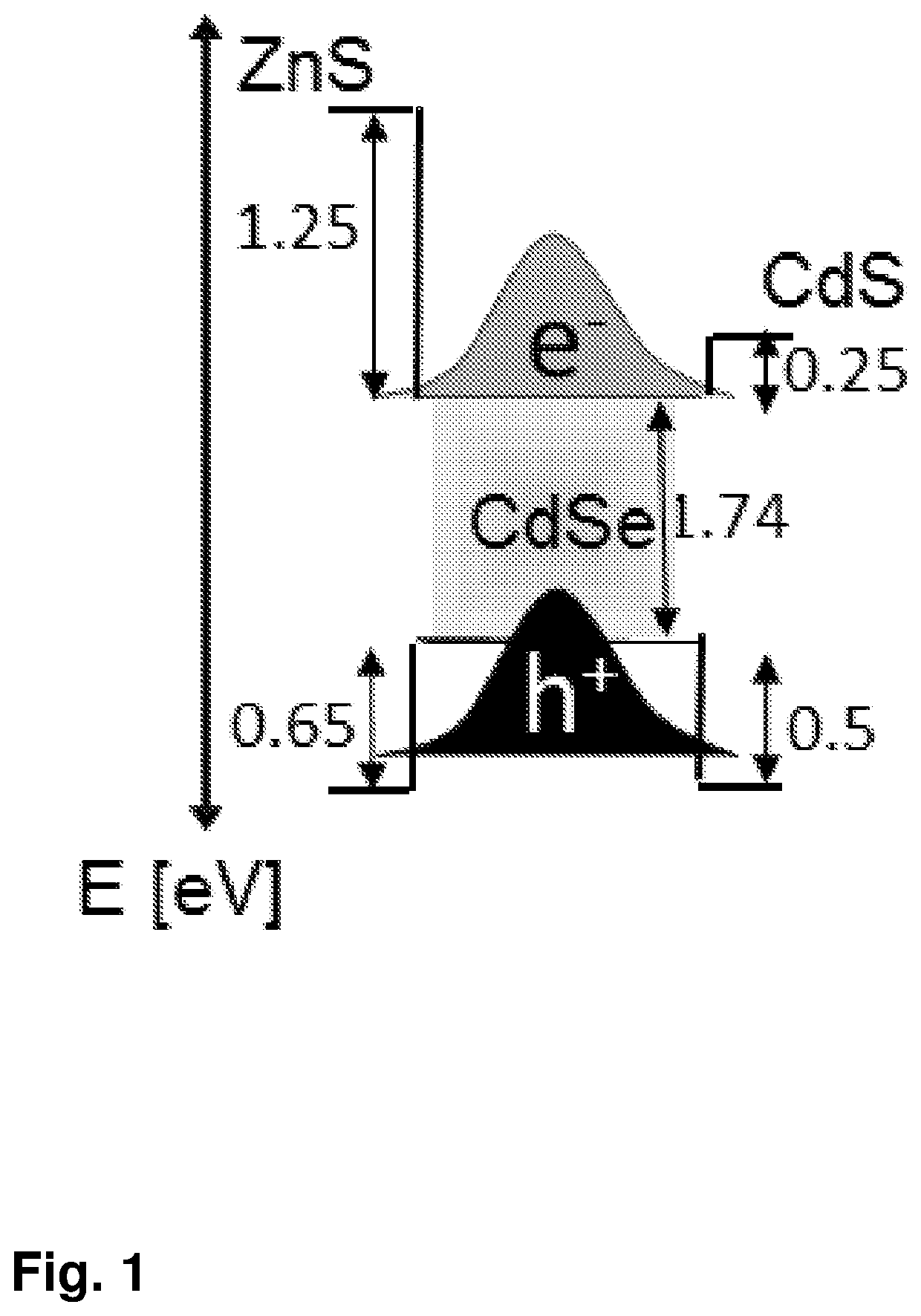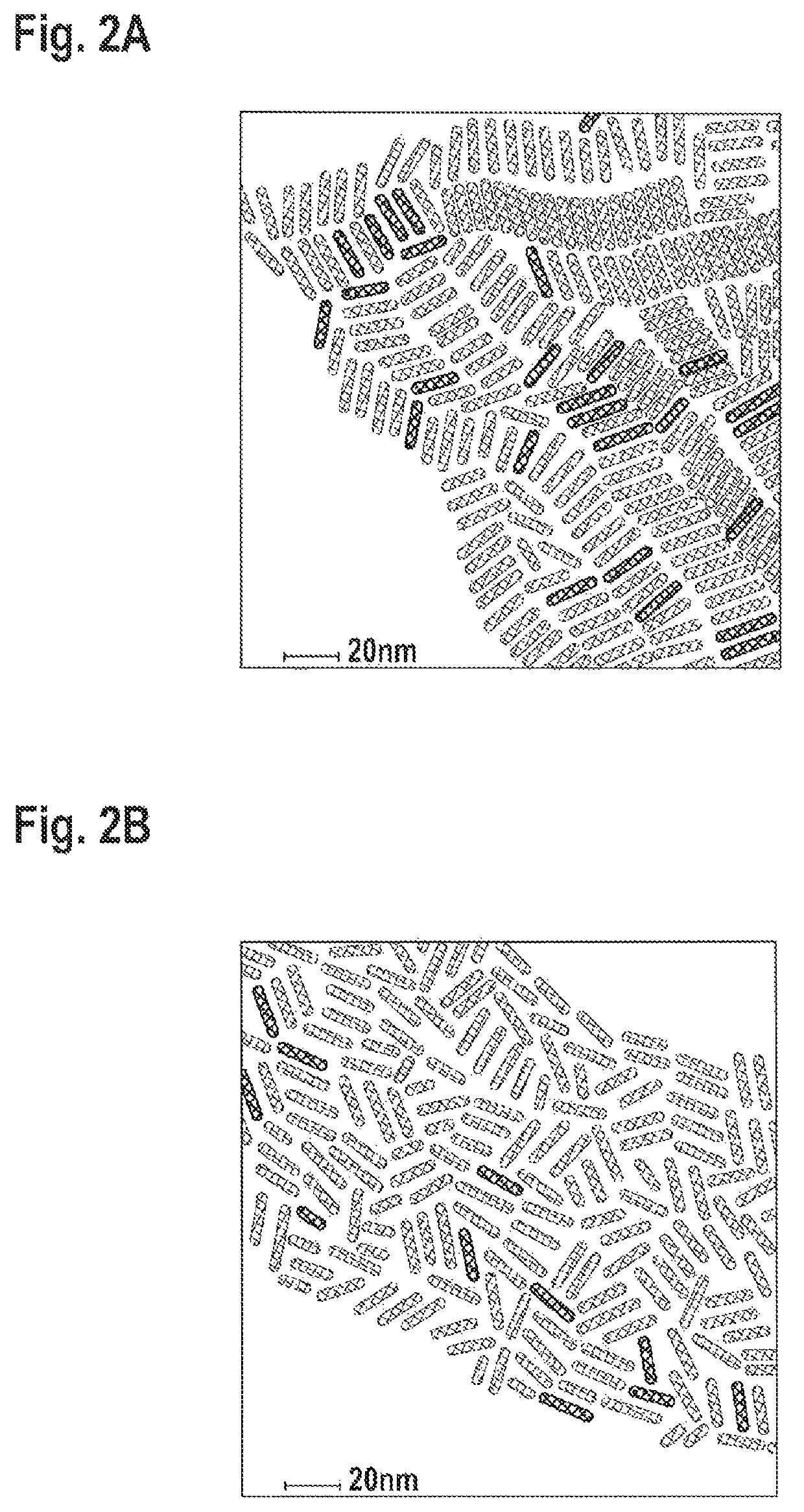Seeded nanoparticles
a technology of seed particles and nanoparticles, which is applied in the field of seed particles, can solve the problem that the seed cannot be considered as a coating, and achieve the effect of reducing the number of seed particles
- Summary
- Abstract
- Description
- Claims
- Application Information
AI Technical Summary
Benefits of technology
Problems solved by technology
Method used
Image
Examples
example 1d
anorods
[0122]In this example there is only Zn in the rod without Cd. No Cd is added to the flask in the beginning of the synthesis. In order to facilitate the nanorods growth in this case, and prevent the decomposition of the seeds, a small amount of Zn precursor is injected together with the CdSe seeds and the sulfur precursor. The product of the synthesis is a rod like structure, as seen in FIG. 12 showing the TEM image. Furthermore, its crystalline structure bears a strong resemblance to the pattern of wurtzite ZnS, as presented in FIG. 3, upper curve, compared to the top panel.
example 2
[0123]In this example seeds other than CdSe dots are injected to the solution, demonstrating control over the composition of the seeded rod.
Example 2A—ZnSe / CdxZn1-xS Nanorod
[0124]In this example small ZnSe nanocrystals seeds are injected to the flask containing CdO, phosphonic acids and TOP / TOPO mixture. The small lattice mismatch between ZnSe and CdS and (2-5%) allows the growth of CdS rods, as shown by previously Addition of Zn precursor to the synthesis, as described in example 1A, leads to ZnSe / CdxZn1-xS nanorod with controlled composition.
Example 2B—InP@ZnSe / CdxZn1-xS
[0125]Further control over nanorods composition and hence properties could be obtained when InP / ZnSe core / shells seeds, or In / ZnSeS seeds, or InP / ZnSe / ZnS seeds, synthesized in accordance with U.S. Pat. No. 7,964,278 and with U.S. Pat. No. 8,343,576, are injected to the flask containing CdO, phosphonic acids and TOP / TOPO mixture. The small lattice mismatch between ZnSe and CdS and (2-5%) allows the growth of CdS ro...
PUM
| Property | Measurement | Unit |
|---|---|---|
| width | aaaaa | aaaaa |
| width | aaaaa | aaaaa |
| width | aaaaa | aaaaa |
Abstract
Description
Claims
Application Information
 Login to View More
Login to View More - R&D
- Intellectual Property
- Life Sciences
- Materials
- Tech Scout
- Unparalleled Data Quality
- Higher Quality Content
- 60% Fewer Hallucinations
Browse by: Latest US Patents, China's latest patents, Technical Efficacy Thesaurus, Application Domain, Technology Topic, Popular Technical Reports.
© 2025 PatSnap. All rights reserved.Legal|Privacy policy|Modern Slavery Act Transparency Statement|Sitemap|About US| Contact US: help@patsnap.com



